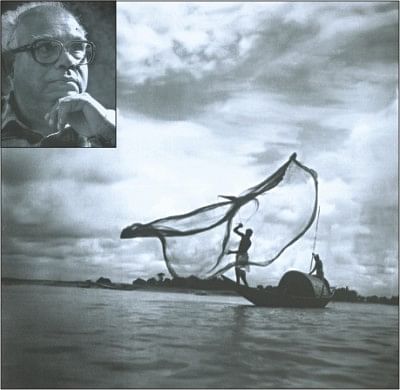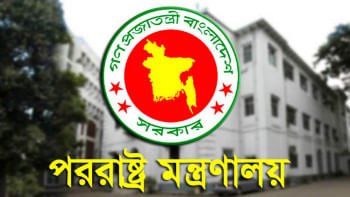Images that speak

Naib Uddin’s images focused on typical rural elements.
I was first introduced to veteran photographer Naib Uddin Ahmed in mid-2003 at his younger brother Dr. Nowazesh Ahmed's residence on Green Road. At the time, he was very frail but could speak articulately. Whenever he visited Dhaka, he would stay with his brother. I met him a number of times and had discussions with him on a range of issues. As a man, he was liberal and believed in secularism. He was also very scholarly.
Within a few days of our acquaintance, he sent me some photos from Manikganj where he used to live. The images feature the untainted charms of rural Bangladesh. One of those images highlights the life of a young peasant. Naib Uddin's photographs tell us many stories, which are familiar but his technique and style were unconventional and unparalleled. Characters are the prime concern in most of his images. His photos also delineate our socio-economic, political and cultural states.
Naib Uddin was born at a village named Paril, under Singhair upazila, in Manikganj district in 1925. He grew up in the village and developed a connection with nature. “The beauty of nature and the simple lives of people fascinated me the most. The essence of life was immersed in the rural environment,” Naib Uddin always said.
When Naib Uddin was a child, he wanted to be a painter. He liked to draw and make clay dolls. In 1941, one of his maternal uncles gave him a baby brownie camera from Calcutta (now Kolkata). Thus his interest in photography grew. He developed the films himself.
After his matriculation, Naib Uddin gained admission at Calcutta Islamia College in 1943. During that time, he had the opportunity to meet Bangabandhu Sheikh Mujibur Rahman, Shilpacharya Zainul Abedin and Patua Quamrul Hassan.
After the Partition in 1947, Naib Uddin returned to his village and contemplated pursuing photography professionally. In 1951, he joined the Public Health Department as an artist. Afterwards he joined the newly founded Agricultural University as the chief photographer in 1961.
Until the Liberation War, Naib Uddin was better known for his landscapes. In his snaps he focused on the typical rural elements like boats, river banks, mustard and corn fields, herds of cows, oarsmen, fishermen, children, potters, women and green horizons. Wheel, plough, cloud, boat etc have been regularly used as motifs in his photographs. “When our labourers and farmers work, they do it in their own style. There is a beauty in it. In my images, I tried to articulate the passion and excitement of the working people,” said Naib Uddin.
In 1971, Naib Uddin risked his life to take many photographs of the war. The images are poignant and bring to life the brutality of that time. These images now survive as documents of the Liberation War. Naib Uddin was so upset by the cruelty of the Pakistani army that since then the pioneering photographer put away his camera.
Naib Uddin regretted not being able to publish a book on his photographs. He entertained the hope that the photographs be preserved with the help of the government or any organisation.
Recently, with his demise, we have lost a great son of the soil who truly projected our lives, nature, the Liberation War and the freedom fighters. Just before his demise, Progga (a private organisation) screened a documentary on him and published a book of his rare photographs. The book is now the only photographic collection of the maestro.

 For all latest news, follow The Daily Star's Google News channel.
For all latest news, follow The Daily Star's Google News channel. 



Comments